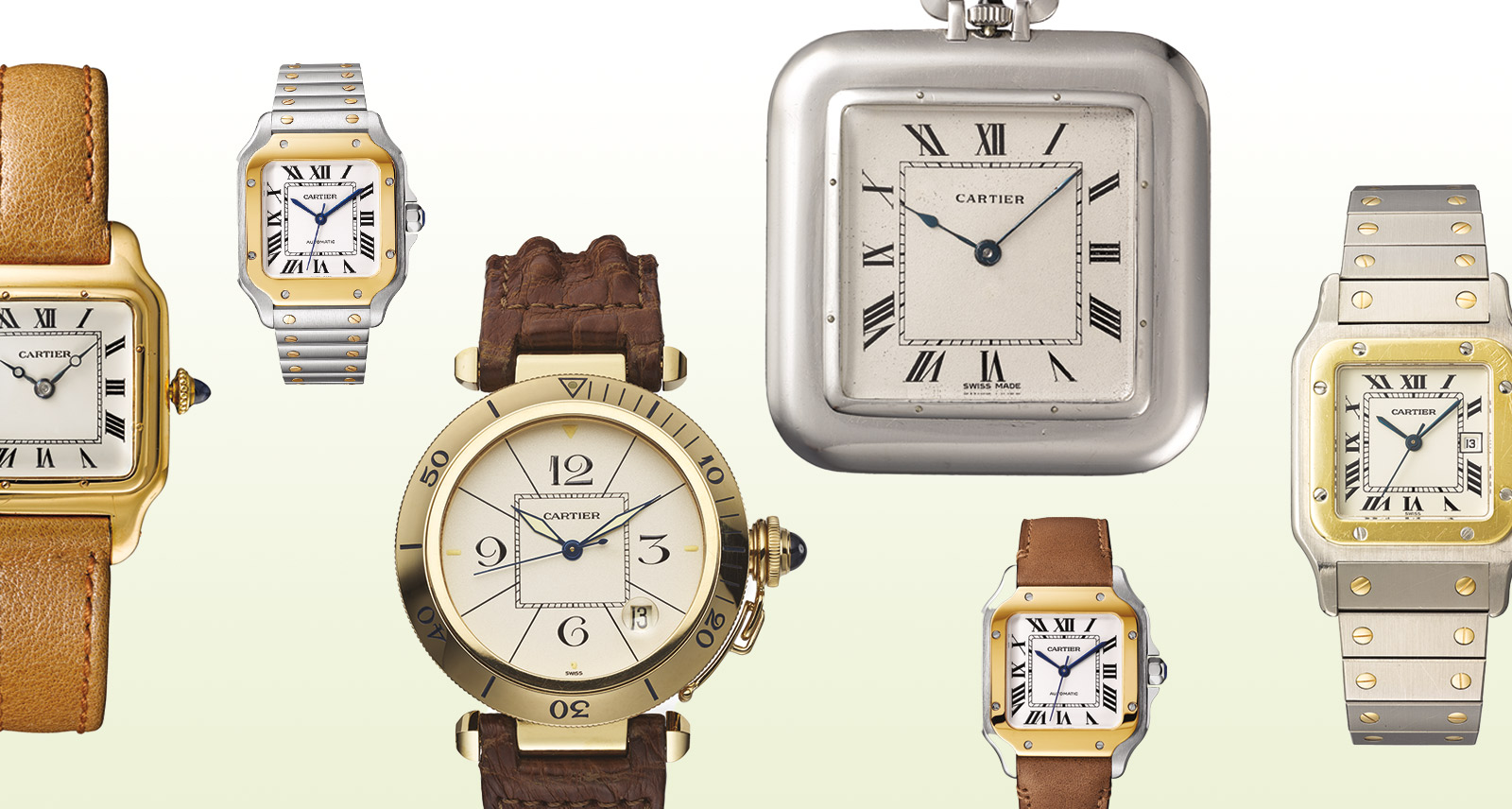Inside “The Collection”: Cartier’s Hidden Watch Archive
At a secret location in Geneva, secured inside a safe, resides the most important collection of Cartier watches in the world. It includes early examples of iconic pieces like the Panthère and Santos, watches owned by celebrities and royalty, and rare one-offs. Maintained by two full-time watchmakers, this archive contains hundreds of pieces valued at untold millions of dollars, the accumulated output of a maison whose history stretches back more than 150 years.
While Cartier doesn’t make a point of publicizing the Collection, as it is internally known, it isn’t a secret. Instead, the watches it contains (along with Cartier clocks and fine jewellery) are available to museum curators looking to illustrate their exhibits with historic pieces from the 20th century. Aside from its value to curators, however, the Collection serves a much grander purpose. It is, in effect, a living link to the mind of Louis Cartier, his remarkable vision, and the birth of watches in their current form.

“Louis Cartier was a visionary,” says Pierre Rainero, Director of Image, Style, and Heritage for Cartier. In addition to managing the Collection and its contents, his far-reaching role also extends to the legacy of the man who created Cartier as we know it. The third generation of the house of Cartier, Louis took over the company founded by his grandfather, Louis-François Cartier, at the end of the 19th century. “Cartier had existed for half a century already, [but] Louis Cartier had the idea that it should be identified by a specific creative language,” says Rainero. “That didn’t exist beforehand.”
Louis Cartier wasn’t the only Parisian with big ideas at the turn of the century. It was the height of the era dubbed la Belle Epoque, when new ideas about politics, art, and technology were transforming life in Europe and around the world. There were many companies making watches, of course, but Cartier’s vision for his family’s maison was to do for timepieces what the first fashion designers were already doing for clothes: creating pieces united by a cohesive vision and a unique aesthetic. Whether a watch, a clock, or a piece of jewellery, Cartier’s productions were meant to be unmistakable for anything else.

“The distinctive point in his watches is a belief in essential shapes and essential lines,” says Rainero, summarizing the design philosophy of clean-lined elegance that remains synonymous with Cartier to this day. “There is a sense of purity there, because all of the watches of Cartier are based on simple geometrical shapes, not specifically the round shape, which had for centuries been the shape of clocks and watches.”
As a prominent member of Parisian society, Cartier was in a unique position to assess the wants and needs of his clientele while making connections with the most influential people of the day. Among these was Alberto Santos-Dumont, a Brazilian coffee heir, inventor, and aviation pioneer. Santos-Dumont was in search of a timepiece that would keep his hands free while operating his experimental flying machines, and to answer this need, Cartier created the Santos-Dumont watch in 1904. Not only was it the world’s first watch designed to be worn on the wrist, it was also square, another major departure from the convention of the day. Santos-Dumont loved his namesake watch and, as it turned out, many other Parisians did too.

“The Santos was immediately worn by other people who were not pilots, because the watch was perceived as an elegant object,” says Rainero. “And that was one of [Cartier’s] main objectives: to bring elegance into any kind of object that would accompany you.” The first Santos watch made by Cartier was lost by Santos-Dumont, but the second one now resides in the Collection, alongside an early commercial model from 1912, which Rainero discovered at a small auction in Paris. “It was labelled as a ‘Panthère watch from the ’80s.’ Of course we didn’t say a word! And we bought it for a very low price,” he says. “It had its original movement from 1912 and is probably one of the first 10 Santoses ever produced.”
While the Santos-Dumont would help to establish Cartier as one of the world’s first modern luxury brands, it was another watch that would cement its place as a top-tier watchmaker. “It’s the epitome of Louis Cartier’s thoughts about the best shape for an object,” says Rainero, describing the Tank, which Cartier launched commercially in 1919. “There’s nothing more simple than two parallel lines connecting the strap, and that’s what the Tank is. It’s two lines containing the dial, and that’s it. You cannot go further with a more essential design for a watch.” More than a century later, the Tank’s overall design has changed very little, a fact Rainero can confirm thanks to a 1920 edition of the watch that now resides in the Collection.

Louis Cartier died in 1942, but the brand he created remains, in both ideology and aesthetics, as remarkably unchanged as the original Tank. This is not the result of chance; the Cartier of today is just as Louis Cartier intended it to be. “It was the wish of Louis that Cartier should be like that,” says Rainero. “We work today the same way Louis Cartier worked at the beginning of the 20th century. The company might be different, but the principles, the values, and the philosophy are there.” This is easy enough to say, of course, but in this case, Rainero can prove it. All the evidence is there, at a secret location in Geneva, ready to remind the world just how far ahead of his time Louis Cartier was.
All images courtesy of Cartier.










